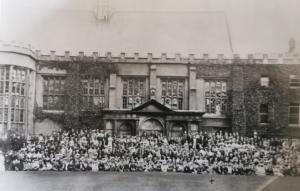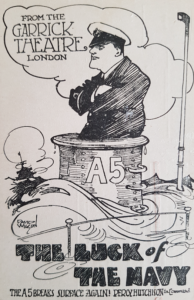Search by topic
- archaeology
- Building of Local Interest
- chapel
- charity
- church
- crime
- dressmaker
- fire
- Great Eastern Railway
- Listed building
- Mapping Relief
- medieval
- oral history
- poverty
- Public House
- Religious House
- Roman
- scholar
- school
- Then and Now
- tudor
- women
- work
- world war one
- world war two
Search by text
 Theatre Royal Auditorium date unknown
Theatre Royal Auditorium date unknownSt Andrew’s Hall, New Theatre Royal, Theatre Royal, St Andrews Street
History of The New Theatre, St Andrew's Street
By 1879 [1882?], largely through the efforts of Mr William Beales Redfern, a disused skating rink in St Andrew’s Street was acquired and fitted up as a theatre. Redfern was an artist who had started a theatre company called the Bijou Amateur Dramatic Club at the Victoria Assembly rooms.
The first of a series of Greek plays (the ‘Ajax’) was staged here in 1882 and theatrical performances were given regularly until the New Theatre was built in 1896, on the site of the old, theatre or St Andrew’s Hall, as it was first called. (A B Gray 1921)
It was difficult at the time for undergraduates to attend performances since productions were not allowed in term time; this was changed eventually by Act of Parliament. Amongst the most successful production were Rob Roy, Still Waters Run Deep, and The Bells. Charles Hawtrey’s Private Secretary was first performed here in 1883.
On the subject of the The Footlights, F A Keynes writes that in 1883 a cricket match was played between a team of Cambridge undergraduates and the staff of Fulbourn Mental Hospital. A return match was arranged but took the form of a concert. This represented the birth of the Footlights.
The first production was Aladdin in 1883 at the old St Andrew’s Hall. the Footlights performed a show there every year until 1895 when the old theatre was demolished. The group then used the New Theatre built by Redfern until 1936 when they moved to the new Arts Theatre built by Lord Keynes.
Information about The New Theatre can be found:
http://www.arthurlloyd.co.uk/CambridgeTheatres.htm
In 1907 it was the venue for the Esperanto Congress which opened on the 12th August.
It was reported in the Cambridge Independent Press (16/8/1907) that the Congress had previously met in Boulogne and Geneva. They were addressed by Dr Zamenhof for 40 minutes in Esperanto.
17/8/1907 Esperanto Congress held in Cambridge, Market Hill bedecked with flags. All other events in Cambridge have been dwarfed in comparison with the third International Esperanto Congress which has brought money into the town when trade was at its lowest ebb. It was hoped the University might have bestowed an honorary degree upon Dr Zamenhof, the Warsaw genius, but apart from a formal reception at the Fitzwilliam Museum it has generally stood aloof from the movement. (Cam.News)
12/8/1907 Esperanto has seized Cambridge like a raging fever. Genuine and spurious Esperanto fills the air as the autolycus of the gutter shouts unintelligent jargon to a street comrade and calls it Esperanto. But when a picturesque figure from the Swiss Canton appeared in the street the impudence of the street Arab was silenced. He was impressed by the tight green breeches and head capped by genuine Alpine hat. A Turk and Indians in national costume add considerably to the effect of this new kind of circus. (Cam.News)
1913 Jack Hulbert in Cheer-oh Cambridge
1920 Claude Humbert in His Little Trip
1921
1922
1928
1930
1933
Contribute
Do you have any information about the people or places in this article? If so, then please let us know using the Contact page or by emailing capturingcambridge@
License
This work is licensed under CC BY-NC-SA 4.0





































